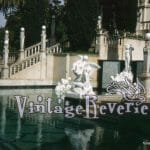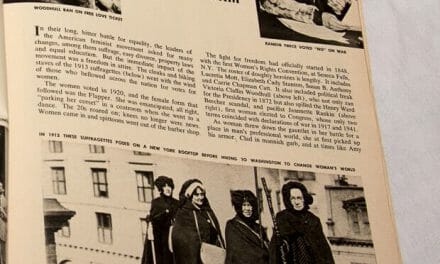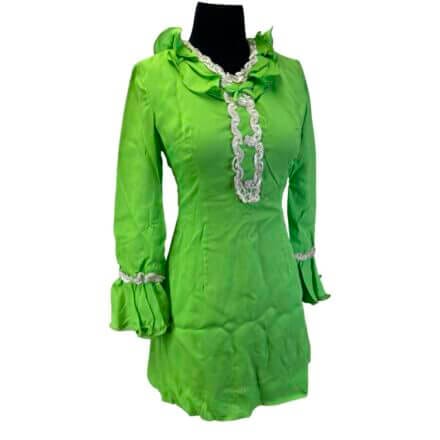
Summer 1917 Edwardian Hair Styles – and the last of the April 1917 scans

This “batch” of scans from the Modern Priscilla magazine provides a fascinating peek into the lives of women during the Edwardian era, specifically focusing on the spring and summer of 1917. The content is a captivating blend of style, domestic advice, and social expectations—all wrapped in the delicate elegance of the time. The issue reflects not just the evolving trends in fashion and beauty but also the cultural pulse of the era, including the growing influence of modernity on women’s roles. From hairstyles to corset adjustment tips and even the many uses of peanuts, this magazine paints an intricate portrait of life at the time.
Hairstyles of the Edwardian Era
The featured hairstyles, specifically highlighted as “Summer 1917 styles,” illustrate how women used their hair as an extension of their elegance and sophistication. Women of this time embraced elaborate updos, soft curls, and carefully coiffed styles, which were often accented with lace (a hallmark of the Edwardian period) and sometimes complemented with decorative combs or ribbons.
In photographs and illustrations from this issue, a variety of styling techniques can be observed. One notable trend was the emphasis on height and width in hairstyles, creating a flattering frame around the face. Accessories like jeweled pins and headpieces lent a sense of refinement to these updos. Achieving such intricate styles, particularly during the Edwardian era, often required professional assistance or the use of detailed how-to guides provided in publications like The Modern Priscilla.
The magazine doesn’t shy away from offering helpful advice. Among its pages, women were instructed on maintaining these styles throughout the summer months, battling heat and humidity with tried-and-true methods. Styling tips included instructions for curling, pinning, and shaping hair, ensuring it stayed neat despite the season’s challenges.
The Corset: More Than Just an Undergarment
The Edwardian fascination with appearances extended beyond hairstyles. In this issue, articles touch upon the “correct adjustment” of corsets, showcasing how integral this garment was to women’s style and posture. Corsets during this period emphasized the “S-curve silhouette”—a hallmark of Edwardian fashion. This shape pushed the chest forward and the hips back, creating a dramatic, feminine figure that was considered the height of elegance and modesty.
Corset advertisements featured in the magazine not only promoted products but also doubled as educational tools, offering advice on how to adjust and wear them properly. Some ads even focused on maternal corsets designed for “young mothers,” as well as garments for young girls, demonstrating how this practice of structured dressing started early and carried throughout a woman’s life.
Domestic Advice and the Everyday Life of Women
This issue of The Modern Priscilla captures the multifaceted responsibilities of women in the home. Beyond beauty and fashion tips, the magazine dives into everyday homemaking, offering practical advice on topics such as novel uses for peanuts, child-rearing techniques, and even recipes. Peanuts, apparently, were a versatile ingredient, used not just as a food but also in household items and remedies.
In an era where women’s roles were deeply tied to domesticity, publications like The Modern Priscilla functioned as both resources and cultural reinforcers. The tips and advice presented in this issue highlight how women were expected to excel in managing their homes while maintaining perfect appearances. It’s a careful balancing act reflected in the advertisements and articles scattered throughout the pages, which often catered to the dual ideals of homemaker and trendsetter.
The Ads: A Window into Edwardian Consumer Culture
As with most magazines of the time, the advertisements in the April 1917 issue offer fascinating insights into the era’s consumer culture. From corset ads to promotions for holiday-themed garters for children, the products marketed were often laced with a sense of propriety and practicality.
One particularly delightful ad promotes children’s garters, illustrating how even the youngest members of Edwardian society weren’t exempt from the expectations of appearance. Other ads for corsets highlight their dual appeal of functionality and femininity, using elegant language to describe how these garments would enhance a woman’s poise and charm. With a heavy emphasis on lace, soft fabrics, and exquisite details, even undergarments were designed with beauty and refinement in mind.
Edwardian Aesthetics: A World Wrapped in Lace
If there’s one thing that ties together the hairstyles, clothes, and social expectations of the Edwardian era, it’s the omnipresent use of lace. Draped over collars, cuffs, and accessory trims—or even woven into the intricate styles of women’s hair—lace symbolized refinement and femininity. The magazine’s imagery reflects this trend, showing how strongly women embraced lace in almost every aspect of their attire.
This dedication to elegance reflected not only personal taste but also the cultural ideals of the time. In Edwardian society, appearances were seen as a reflection of character, and women who paid attention to detail in their dress and grooming were often judged favorably in their social circles.
The Changing Role of Women in 1917
It’s important to remember that the world of The Modern Priscilla—while glamorous and steeped in tradition—existed alongside the far-reaching changes brought about by World War I. By 1917, women’s roles were beginning to shift. Many women were entering the workforce to fill jobs left vacant by men sent to war. These societal shifts weren’t yet fully reflected in this publication, which remained steadfast in its depiction of women as keepers of tradition, elegance, and domesticity. However, subtle reminders of the times can still be found, such as an emphasis on practicality in some articles and advertisements.
Although the ornate fashions and hairstyles of the Edwardian period continued to hold sway, practical concerns and modern needs were beginning to seep into everyday life. Over the next few years, these influences would eventually lead to a dramatic reshaping of fashion and beauty, paving the way for the streamlined silhouettes and shorter hairstyles of the 1920s.
Final Thoughts
The pages of this scanned issue from April 1917 are nothing short of a time capsule, offering a wistful glimpse into a world both familiar and distant. It’s filled with beauty and inspiration, but also underpinned by the rigid expectations placed upon women of the time. From the detailed descriptions of elaborate updos to the advice on corset adjustment, we get a sense of how much effort went into crafting an image of elegance.
For those fascinated by vintage fashion, historical trends, or Edwardian culture, this magazine remains an invaluable resource. As the last of the April 1917 scans, these pages serve not only as a window into a bygone era but also as a reminder of how much women’s lives—and society at large—have transformed over the past century.
Feel free to share this post or visit our site for more insights into vintage fashion and culture. Who knows what other gems of history we’ll uncover in the archives?






























You must be logged in to post a comment.